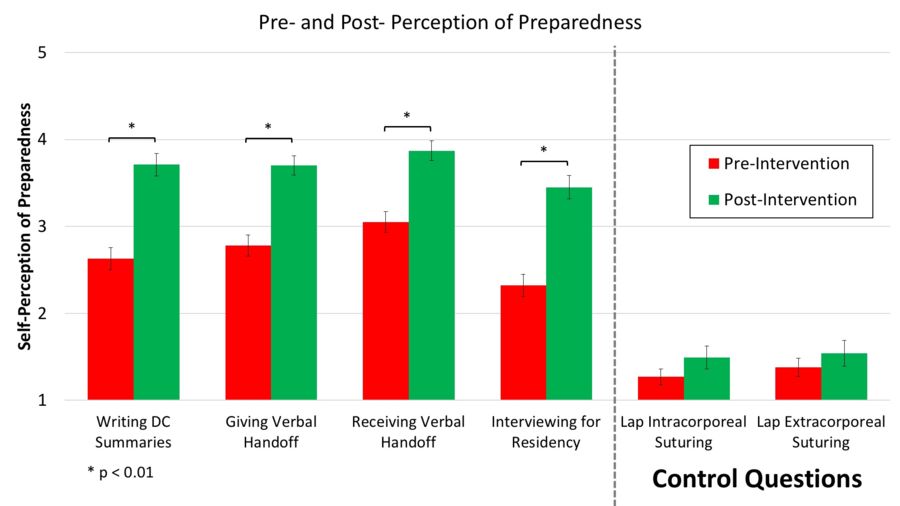PS2-01: A MULTI-INSTITUTIONAL IMPLEMENTATION OF A SUBINTERNSHIP CURRICULUM: SAFE EDUCATION IN A HIGH-STAKES AUDITION SETTING
Edmund W Lee, MD1, John R Martin, MD2, Sylvia Bereknyei Merrell, DrPH, MS1, Katie J Stanton-Maxey, MD2, James N Lau, MD, MHPE1; 1Stanford University, 2Indiana University
Background: Audition subinternships in surgery are commonplace. In theory, medical students should function as interns, however limitations in privileges such as executing medication orders prevent such practice. Despite these gaps, these rotations remain unstructured. The goal for our structured curriculum is to create a safe learning environment for a high-stakes rotation while teaching subinterns intern-level skills.
Methods: We implemented weekly workshops for surgical rotators during their month-long rotations at two academic institutions. Content included intern-level skills such as writing discharge summaries, giving verbal handoffs, and performing basic laparoscopic skills. Anonymous pre- and post-surveys collected perceived level of preparedness performing specific tasks as an intern (including control questions) through a five-point rating scale (“not at all” to “extremely”). Post-survey items on educational environment were administered on a Likert scale (“strongly disagree” to “strongly agree”). Paired t-tests were used to analyze our results.
Results: A total of 61 students participated in the curriculum (38 at one institution, 23 at the other), 32 of whom were visiting from an outside institution. Significant increases in mean preparedness were observed in writing discharge summaries (2.6 to 3.7, p<0.01), giving handoffs (2.8 to 3.7, p<0.01), and receiving handoffs (3.0 to 3.9 p<0.01). There were no increases in skills that were not covered in the curriculum and unlikely performed in the rotation such as laparoscopic intracorporeal (1.3 to 1.5, p=0.12) and extracorporeal suturing (1.4 to 1.5, p=0.31). Students felt a sense of belonging within the institution and that the learning environment was comfortable and safe (mean range 4.6-4.9). There was no significant differences in perceptions of the learning environment between visiting and home students.
Conclusions: Here we demonstrate a structured curriculum geared toward preparing senior medical students for internship during a high-stakes audition rotation, while establishing a safe learning environment for all learners. In the current state of medical education, where transitioning medical students are perceived to be ill-prepared for residency, the subinternship rotation presents as another avenue to increase the value of the fourth year of medical school.

